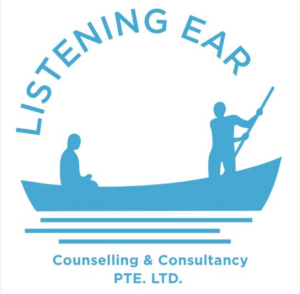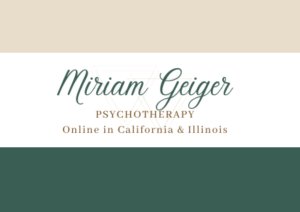Eating disorders can cause many difficulties in a person’s life. However, there is some positive news: many treatment options are available. Furthermore, if you have an eating disorder, you don’t have to face it alone. There is always help for managing an eating disorder.
Eating disorders impact people of varying genders, ages, classes, abilities, races, and ethnic backgrounds. These complex mental health disorders are serious, and are not a personal choice. However, it is also essential to note that recovery from an eating disorder is possible, and there is hope.
This article will discuss common eating disorder treatments and resources for managing an eating disorder.
What is an eating disorder?
An eating disorder is a complex, multifaceted mental health issue impacting a person’s emotional and physical health. In addition, people with eating disorders usually develop unhealthy relationships with food or weight. Three of the most common eating disorders include anorexia, bulimia, and binge eating disorder, although there are many different types. For more about types of eating disorders, you can refer to our article 8 Common Types of Eating Disorders.
Eating disorders are treatable, and there is help available. However, people who do not access treatment for their eating disorders can experience life-threatening issues.
How common are eating disorders?
This paragraph features gendered language, according to research.
About 20 million women and girls and 10 million men and boys in America have an eating disorder. Various complex factors can cause eating disorders, like genetics, brain biology, personality, cultural and social ideals, and mental health.
Where Can You Start When You’re Looking for Help
You can start many places when you want to seek help. For example, you could see your primary medical practitioner or find a mental health professional specializing in eating disorders. You can find qualified therapists here.
No matter where you start, you can find it beneficial to get a referral to a team of professionals who work in eating disorder treatment. For example, members may include:
- A mental health professional, like a psychologist for therapy. You could also see a psychiatrist if you require medication.
- A registered dietitian who can offer advice on nutrition and meal planning.
- Medical or dental specialists for treating dental problems that are common from eating disorders.
- Your loved ones who can help support you through this time.
The best course of action is for everyone in your treatment to communicate about your progress so any adjustments can be made.
Since an eating disorder is such a complex mental health condition, you will likely need to see your team regularly, even if you are coping well with your eating issues.
How to Set Up a Treatment Plan
A treatment plan is an essential part of eating disorder treatment. Your previously mentioned treatment team will devise a plan based on your goals and needs. Here are some examples of what you and your team will work on:
- Developing a treatment plan, including coming up with goals and what to do if you can’t stick with your plan.
- Treating and monitoring physical complications.
- Identifying resources, like ones available in your area.
- Working to identify affordable treatment options since many programs can be expensive.
Different Levels and Types of Treatment for Eating Disorders
There are various treatments available depending on your unique situation and eating disorder. Here are some examples:
Outpatient Eating Disorders Treatment
This treatment option is the least restrictive care option for people with eating disorders. In an outpatient program, patients may see a nutritionist, therapist, and other recovery professionals about two to three times per week.
This level of care can be beneficial for those that need to work or attend school. They are also ideal if you do not have health insurance coverage for more extensive levels of care but still require help for recovery.
Intensive Outpatient Program (IOP) Eating Disorders Treatment
IOP is for people who require more support than outpatient treatment and have some flexibility in their schedule. This program will ensure that patients meet two to five days a week, and treatment options include:
- Individual therapy
- Nutrition consultation
- Topic-focused groups
- Family support groups
Residential Eating Disorders Treatment
Patients received 24-hour care at a live-in facility for residential eating disorders treatment. Each patient is continually supervised, and their health is monitored.
These types of treatment programs are generally very structured, with a setting allowing patients to focus solely on their physical and psychological healing. Also, this treatment option provides everything needed in one central location.
Inpatient/Hospital Eating Disorder Treatment
This treatment option provides continuous 24 hours a day care in a hospital setting. The main goal is medical stabilization and interruption of weight loss, with less than three weeks of typical stays.
Once your health is stable in a hospital setting, you will likely be discharged to a residential treatment center for ongoing care.
Partial Hospitalization
Partial hospitalization programs (PHPs) are less extensive than inpatient or residential treatment. For example, instead of receiving 24-hour care in a hospital, you will attend PHP treatment in a structured environment for various hours a day on multiple days during the week.
This treatment option is best for those who require significant support but are medically stable enough to start to transition back into their typical routines.
Continuing Care
When discharged from residential and/or inpatient programs, there are options to continue care. That way, you can continue your sessions with your primary therapist and nutritionist for ongoing recovery.
The treatment team will decide the frequency of sessions at higher levels of care before discharge.
Takeaway
Living with an eating disorder can disrupt your life and put you at risk for severe medical complications. Luckily, many treatment options are available these days so you can get the help you require.
If you are an eating disorder practitioner looking to connect with potential clients and provide them with treatment options, be sure to sign up for our database at LGBTQ and ALL. That way, you’ll get the exposure you need for your clinic and can start helping people with their eating disorders as soon as possible.















